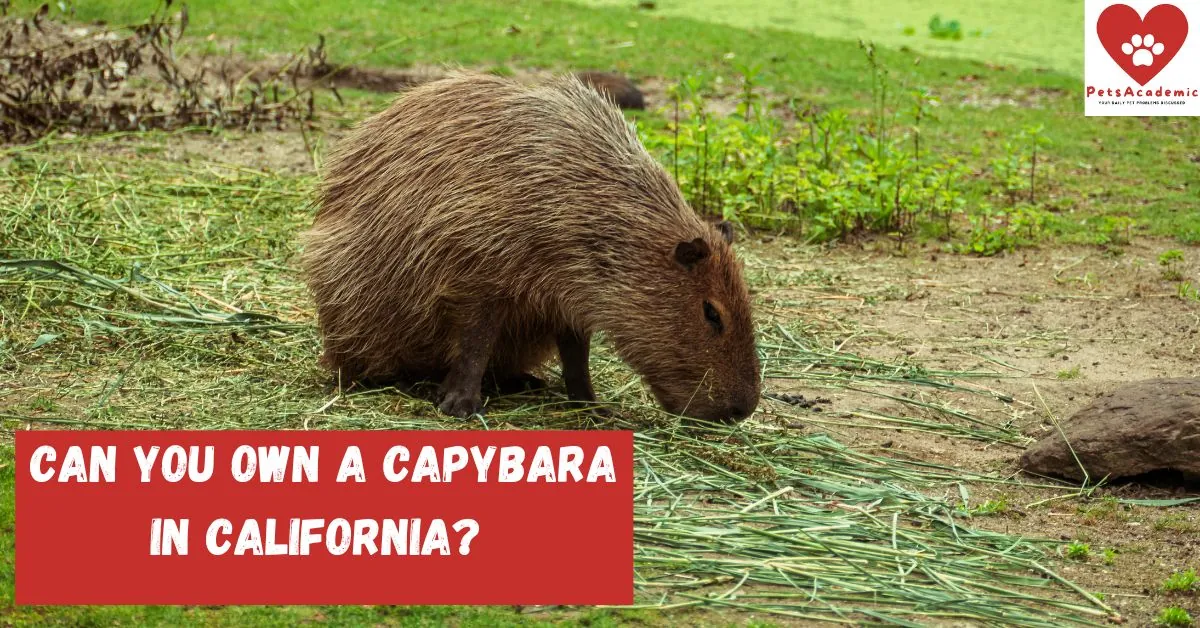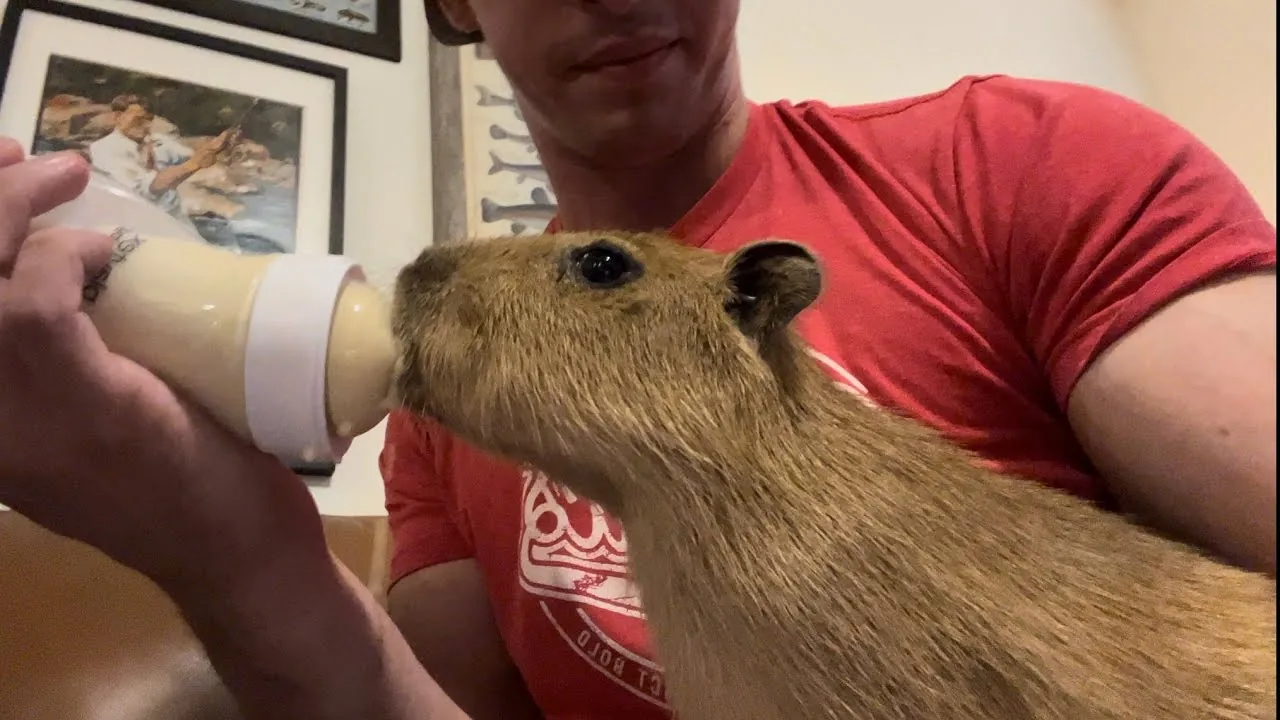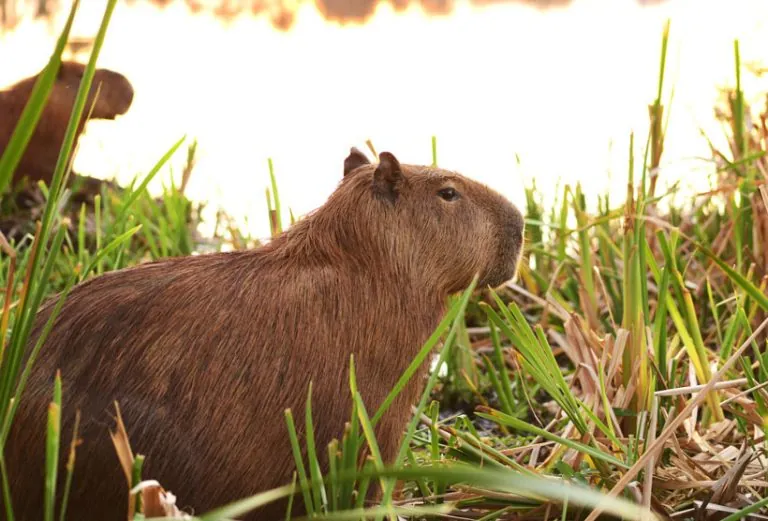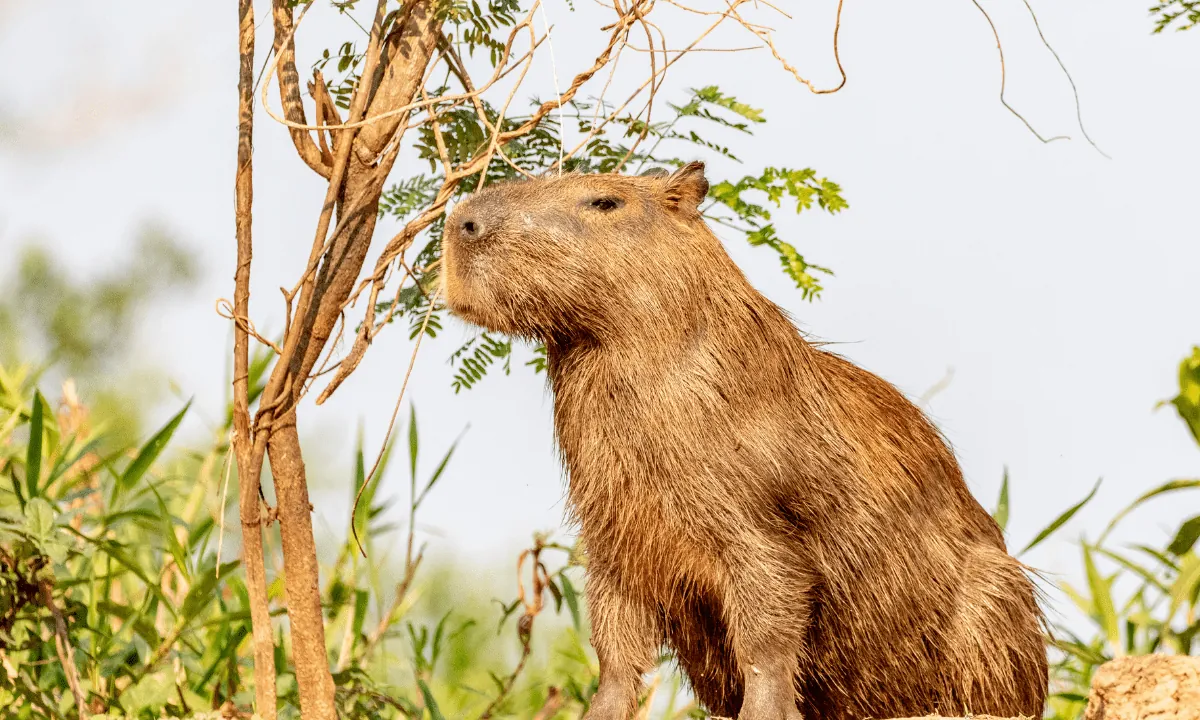Ever wondered, “What does it take to raise a happy, healthy capybara?” Let’s get real: these adorable, water-loving creatures aren’t your average pets. They’re big, social, semi-aquatic rodents that need more than a backyard and a bowl of food. Raising a capybara requires thought, effort, and a setup that mimics their natural environment. So, if you’re serious about giving one of these amazing animals a forever home, stick around. I’ll walk you through exactly what you need to know.
Why Understanding a Capybara’s Natural Habitat Is Crucial

First things first: capybaras are native to South America. They hang out in tropical wetlands, where they’re often found chilling by rivers, ponds, or marshes. In the wild, they eat grass, swim to cool off, and spend their days in groups to stay safe and happy. So, if you’re raising a capybara, your goal is to recreate this vibe as much as possible.
Here’s what that means for you:
- Water is non-negotiable. Capybaras spend a lot of time in water, and they even use it to regulate their body temperature.
- They’re social butterflies. Without company—human or animal—a capybara can get lonely and stressed.
- Room to roam. These animals are active grazers that need space to stretch their legs.
Legal Stuff: Can You Even Have a Capybara?

Before we dive into creating the perfect environment, let’s talk legality. Owning a capybara isn’t allowed everywhere. Some states require permits, and others outright ban them as pets. For example, Texas and Pennsylvania are generally capybara-friendly, but California? Not so much.
Make sure to:
- Check your state’s exotic pet laws.
- Get the proper permits if required.
- Find a vet experienced with exotic animals nearby.
The Ultimate Capybara Setup

1. Space: Bigger Is Always Better
Capybaras are not couch potatoes. They’re big (we’re talking up to 150 pounds!) and need plenty of space to move around.
- Minimum space: At least 100 square feet per capybara.
- Outdoor enclosures: Fenced areas work best. Ensure the fence is at least 3 feet high and extends underground—capybaras are sneaky diggers.
- Indoor living: If you’re raising a capybara indoors part-time, make sure the space is safe, with no cords or toxic plants around.
2. Water Access: Make It a Splash Zone
Capybaras love water. It’s where they relax, play, and even hide when they’re scared.
- Pool or pond: Your capybara will need a water source that’s at least 2 feet deep. Kiddie pools can work as a starter, but a natural pond is even better.
- Cleanliness: Make sure to change the water regularly or install a filter system to keep it fresh.
- Temperature control: If you’re in a colder area, consider a heated pool during winter months.
3. Shelter: Protection From the Elements
Your capybara will need a safe, comfy space to rest and escape extreme weather.
- Shade: Essential for hot summers. Plant trees or add a tarp.
- Enclosed shelter: A small shed or insulated dog house works great for colder nights.
- Bedding: Use hay, straw, or soft mats to keep things cozy.
Feeding Time: What Do Capybaras Eat?

Capybaras are herbivores with simple tastes—but that doesn’t mean you can feed them just anything.
- Main diet: High-quality hay (like Timothy or orchard grass) and fresh grasses.
- Treats: Fresh veggies (carrots, squash) and fruits (apples, melons) in moderation.
- Water plants: If you’ve got a pond, aquatic plants like water lettuce or duckweed are perfect.
- What to avoid: Never feed onions, garlic, or anything processed. These can be toxic.
Pro tip: Always have fresh water available for drinking and hydration.
Keeping Your Capybara Happy: Social and Mental Needs
Capybaras are social creatures. In the wild, they live in groups of up to 20. If you’re raising a single capybara, it’s on you to provide companionship and stimulation.
How to Meet Their Social Needs:
- Best-case scenario: Get a pair of capybaras. They thrive with friends.
- Second-best: Spend a LOT of time with your capybara. They’ll see you as part of their group.
- Other pets: Dogs or cats can sometimes work as companions, but introduce them slowly and carefully.
Mental Stimulation:
Keep their brains busy with:
- Chew toys: Non-toxic wooden blocks or branches.
- Exploration: Hide treats around their space.
- Playtime: Capybaras love gentle games in water.
FAQs About Raising Capybaras

Q: Do capybaras smell bad?
A: Not really. They’re surprisingly clean animals, especially if you keep their water and living area fresh.
Q: Can capybaras live indoors?
A: Part-time, yes. But they’re happier with outdoor space and a water source.
Q: Are capybaras aggressive?
A: Nope. They’re docile by nature but can nip if stressed or scared.
Q: How long do capybaras live?
A: In captivity, they typically live 8–12 years with proper care.
Q: Are capybaras noisy?
A: They make cute sounds like whistles and purrs. It’s not too loud, but they are vocal.
Health and Maintenance

Regular Vet Care
Find a vet experienced with exotic animals. Regular check-ups can prevent many health issues.
- Common concerns: Parasites, dental problems, and vitamin deficiencies.
- Vaccinations: Ask your vet if your capybara needs any.
Cleanliness Is Key
- Clean their enclosure: Spot-clean daily and do a deep clean weekly.
- Water maintenance: Keep their pool or pond hygienic to avoid infections.
Final Thoughts: Raising a Capybara Is a Commitment

Raising a capybara isn’t for everyone. It takes space, time, and money to give them the environment they deserve. But if you’re ready to go all in, these gentle giants can make amazing companions. Their playful personalities, love of water, and unique quirks are hard to resist. Just remember: a happy capybara is one that lives in a setup tailored to their natural needs.
So, if you’re up for the challenge, get ready for an unforgettable adventure with one of nature’s coolest creatures. Trust me, it’s worth every effort.
